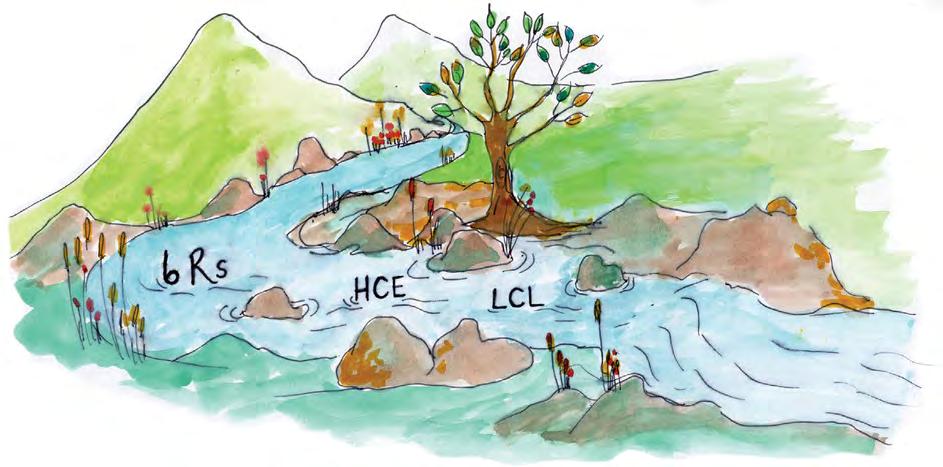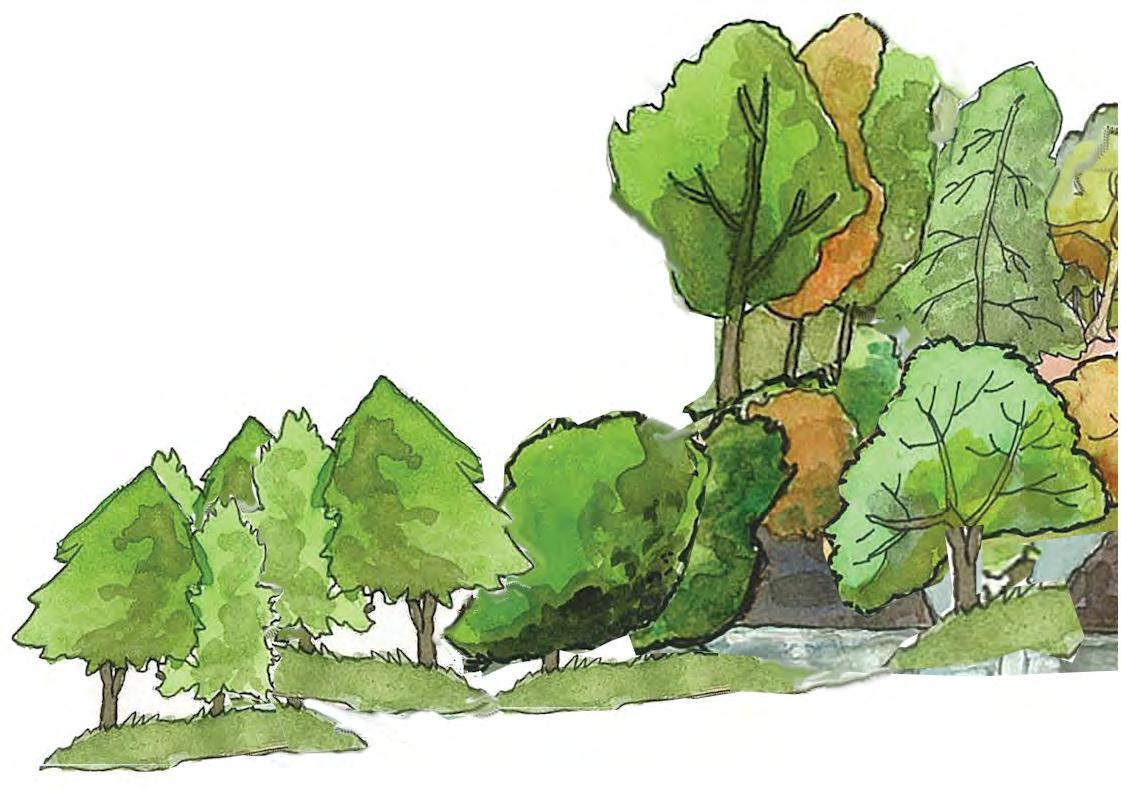
7 minute read
Following the Streams of Faith that Guide Us
Faith communities exist precisely because they have been addressing human suffering and celebrating the healing power of the spirit for millennia. Love is the driving force that moves us to hope and renewal, be it love received or given to self and others, including God. In a time when trauma and resilience are buzzwords guiding clinical practice, community collaboration, social policy, school reform, etc., communities of spirit have a special role and responsibility to bring our wisdom and voice into the conversation.
We are communities of hope. We are communities of life. Religious ritual and experience were formed precisely to mediate experiences of suffering with the power of God’s presence and promise. It turns out that our practices are exactly what science tells us is needed for protecting, healing and transforming the impact of trauma on our bodies, minds, spirits, and communities. That in-between space where hurt and hope meet is the place of our most profound spiritual power. Many frameworks or streams of thought can help us practice even more intentionally. We have chosen three: The 6 Rs of Trauma-Informed Care (6 Rs), Healing Centered Engagement (HCE), and the Leading Causes of Life (LCL), but there may be others that are helpful to you. Look for how these three frameworks show up and help us understand the stories we have told. Consider how the frameworks are like streams that flow together into one river, connecting to the language and teachings of our faith. That in-between space where hurt and hope meet is the place of our most profound spiritual power.
Advertisement
It is helpful to remember that frameworks do not carry answers, however powerful or archetypal they may be. What they do suggest are helpful questions that we might otherwise miss. Answers come over time, through action, experience, reflection, prayer and learning. Use these frameworks to look for questions to stimulate and guide you on your determined journeys. We believe that God does not want us to sit back and receive answers from on high, however fervent our prayers. God wants us to be human by experiencing life and each other, trying to work faithfully for good. Through prayer, as divinely inspired and honest reflection, we may receive God’s miraculous gifts of questioning intelligence, loving empathy, free will, and the ability to act. This is part of the Imago Dei we have been granted.
When Trees Reach out to the Sky: What Spoke to Us on our Journey?
It is important to mention that we came together amid the COVID-19 pandemic, social uprisings, and collective traumatic experiences. We were witnessing our communities struggling to cope, and we ourselves needed support for how to respond. This Barefoot Guide results from our own praying, thinking, writing, and creative collaboration during these difficult times. As we worked together, sharing our stories, listening to one another, reflecting and writing, some themes emerged that seemed to stand taller, like trees in the distance. They were those that are particular to congregational life. Themes of love, grace, relationality, the life-force of community, the painful paradox that humans can cause real trauma and be agents of healing, and that life does find a way to grow. Love showed up again and again in our stories just as it does in the Bible stories of Jesus and his relationships with God and God’s people. It was evident in real-life examples of how love looks in practice—sacrificial, forgiving, compassionate, truthful, nonjudgmental, and steadfast. The love of Christ in action healed individuals, communities and society. Love in action seems to be a life force that connects us through Jesus with the potential power to heal individuals, communities and society. Grace can be a love force that we receive and give. It produces an overflow of love into our relationships with God, neighbor and self. The overflow of love may show up in the ways we work at caring and healing by 1) nurturing our relationship with God through practices such as prayer and fasting; 2) nurturing the spiritual and physical image of God within us as selfcare; and 3) carrying and honoring our neighbor by offering our sacred presence in acts of accompaniment, deep listening, and advocacy.

Relationality is connection. This is linked to a view of the world that underlines how no person or thing exists in isolation, because existence necessarily means being 'in relationship'. We are all connected and what we do affects others. The words of Martin Luther King Jr. describes this best when he said, “In a real sense all life is interrelated. All [people] are caught in an inescapable network of mutuality, tied in a single garment of destiny. Whatever affects one directly, affects all indirectly. I can never be what I ought to be until you are what you ought to be, and you can never be what you ought to be until I am what I ought to be… This is the inter-related structure of reality.”
The paradox of human induced trauma and building resilience is that
hurt and hope co-exist. Human-induced trauma or suffering (vs. trauma caused by events or life circumstances) impacts us in a deeply negative way, while quality relationships, social support and caring environments (also human-induced) can mitigate and help heal that very same trauma and build resilience. Congregations that provide quality relationships, social supports and caring environments are providing sanctuary or safe spaces to allow healing to flow and resilience to build. A systemic analysis is necessary. We see what happens to communities when we hurt them by not investing in their economies, schools, and public spaces. The neighborhood sags and struggles for breath. Anger flares up and bursts out in gun violence or apathy. These are literally cancers in the body of the community. As a nation we act out our depression and anxiety by implementing public policies and social structures that adversely impact health and well-being, fueling hunger, homelessness, and war. So it’s important to bring this important science around the impact of adversity into our analysis and understanding about what shapes the challenges we face. We want congregations to remember and celebrate their relevance in an age where the world desperately needs them.
The life-force of community is not new. While neuroscience, ‘Trauma-informed Care’, ‘Healing Centered Engagement’ and ‘Leading Causes of Life’ seem to have discovered a new thing, those of us raised in healthy, loving congregations know they are just articulating ancient spiritual wisdom. We want congregations to remember and celebrate their relevance in an age where the world desperately needs them.


Life does find a way to grow. Gary Gunderson, author of the book, Leading Causes of Life, puts it this way, “The Leading Causes of Life language is less the answer than the right question. When the committee you happen to be sitting on is facing what seems like an incomparable problem, simply ask the right question, “Is there any life here to work with?” There is always life here to work with. We just have to learn how to talk about it. Life does find a way, among the places, people, and communities that we love.”
Trauma is not all there is. A favorite saying about trauma and resilience comes from a community psychologist from the Chicago area, Dr. Carl Bell, who said, “Risk factors are not predictive factors because of protective factors.” What he means is that all of the research on the impact of trauma on our brains and bodies shows a pretty clear connection between these stressors and health outcomes. The more of these experiences we have, the more likely we are to have chronic disease, struggle with mental health or substance use disorders, or have chronic pain. But there is also strong evidence that shows that positive social relationships, a sense of meaning and purpose, feeling inspired, rituals, rhythm, and service to others can protect us from these impacts. These kinds of experiences and activities also get into our bodies and help buffer the stress and keep us healthy. So what is exciting is that these things that science tells us are protective and healing are actually things that faith communities do every day!
Holding Hurt and Hope
With this in mind, we found the imagery of trees spoke to all of us.
Those trees that may appear to be dying or dead but continue to grow; a forest of trees that force a different perspective; new saplings struggling to stretch their branches high, and old wizened trees whose roots have dug in deep to weather the storms. For these reasons, the trauma and resilience tree became a useful metaphor you will see throughout.










